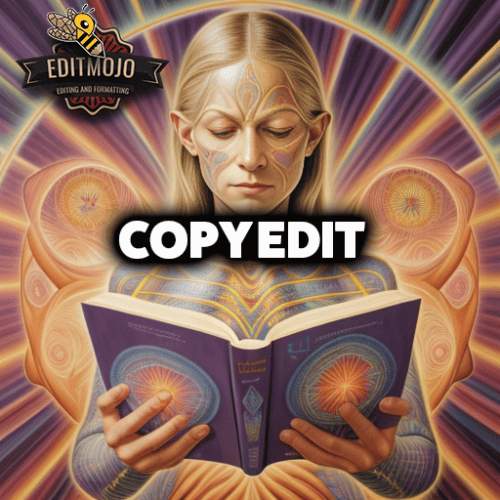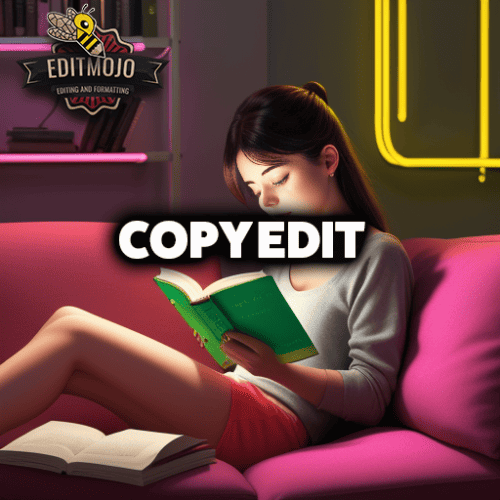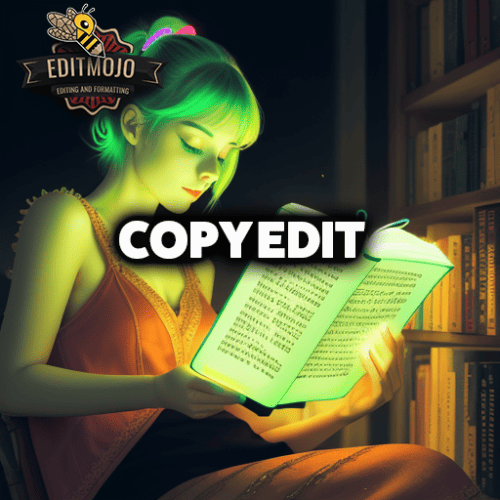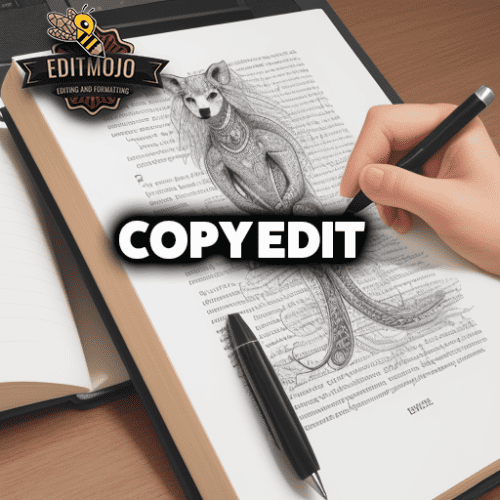Copy Editing
The Art and Science of Copy Editing. If words are the building blocks of ideas, then copy editors are the architects, crafting and refining those ideas to communicate clearly and effectively. In a world of information overload, high-quality content is more important than ever, and the unsung heroes behind this are the copy editors. This article will serve as your comprehensive guide to understanding the art and science of copy editing.
Book editing is an essential step in the publishing process to ensure quality and coherence in the final product.
Key Takeaways Table
| Key Points | Takeaway Summary |
|---|---|
| The Role of a Copy Editor | A copy editor goes beyond correcting grammar and punctuation. They ensure the text is clear, coherent, complete, concise, and consistent. |
| Copy Editing Process | Copy editing involves understanding the content, addressing major issues, fine-tuning the language, and ensuring the document is ready for publishing. |
| Tools for Copy Editing | Software like Grammarly and Hemingway App, along with style guides like AP Stylebook or the Chicago Manual of Style, are essential tools for copy editing. |
| Copy Editing and SEO | Copy editors play a crucial role in SEO by incorporating relevant keywords, creating engaging meta descriptions, and ensuring clean HTML. |
| Ethics in Copy Editing | Copy editors uphold the ethics of publishing by ensuring accuracy, fairness, and eliminating bias. |
| Impact of Copy Editing | Well-edited content improves reader comprehension, increases shareability, and enhances a brand’s reputation. |
| EditMojo Platform | EditMojo is a comprehensive platform for all copy editing needs, offering quality assurance, fast turnaround, ease of use, and competitive pricing. |
Copyediting Vs Copy Editing
You’ve likely come across terms like “copyediting” and “copy editing.” Although they seem indistinguishable, and many might use them interchangeably, subtle differences in usage and perception exist within the industry. In this post, we’ll attempt to illuminate these differences and help you understand which term is more appropriate in different contexts.
To start with, both “copyediting” and “copy editing” refer to the process of reviewing and correcting written material to improve its accuracy, readability, and fitness for its purpose. This can involve addressing issues related to grammar, punctuation, syntax, style, consistency, and more.

In the publishing and journalistic realms, “copyediting” is often favored as a single, unhyphenated word. This version is generally used when referring to the professional occupation of a “copyeditor.” The spelling solidifies the professional identity of copyeditors and emphasizes the specialized skills they bring to their work.
Here are some examples of how it might be used:
- “She’s been working as a copyeditor for the New York Times for five years.”
- “His copyediting skills are extraordinary.”
Copy Editing
On the other hand, “copy editing” as two words is more frequently used in a broader context or when referring to the act of editing copy. It’s generally used when the focus is on the process, rather than the profession.
Here are some examples of its use:
- “The manuscript requires rigorous copy editing before publication.”
- “She spent the entire weekend copy editing the new report.”
To complicate matters, you might also encounter the term “copy-editing,” hyphenated, particularly in British English or when used as an adjective before a noun, such as in “copy-editing services.”
So, which should you use? The answer might depend on your audience and the specific context. In professional contexts or when referring to the role itself, “copyediting” is often preferred. However, when talking about the process or task, “copy editing” might be more appropriate.
Remember, language is a dynamic entity, and norms continue to evolve. As of my knowledge cut-off in September 2021, both “copyediting” and “copy editing” are in use and understood in the industry, although individual style guides or companies may have their own preferences.
In any case, whether you’re a “copyeditor” conducting “copy editing” or “copyediting,” the essence of the task remains the same: refining text to convey the intended message as effectively as possible. Happy editing!

The History and Evolution of Copy Editing
To truly appreciate the art of copy editing, it’s crucial to understand its history. In the early days of publishing, the term copy editor referred to the person who checked the writer’s copy before it went to typesetters. Over the centuries, however, this role has significantly evolved.
Technological advancements, such as the invention of the typewriter and, later, computers and word processing software, have reshaped the way copy editors work. These tools have not only made the editing process more efficient but also increased the demand for well-edited content.
In today’s digital age, copy editing has taken a more central role. The proliferation of content across numerous platforms has highlighted the need for accuracy, clarity, and good grammar. Copy editors are now the gatekeepers of good content, whether in print, online, or any other medium.
Understanding the Role of a Copy Editor
The role of a copy editor extends far beyond proofreading. A copy editor ensures the text is clear, coherent, complete, concise, and consistent—the five Cs of copy editing. They may have to fact-check, rewrite, restructure, or eliminate unnecessary parts to maintain flow and readability. They are also responsible for conforming text to a specific style guide.
But what differentiates a copy editor from a proofreader or a content editor? Well, a proofreader checks for typographical errors, formatting inconsistencies, and minor grammatical errors. A content editor, on the other hand, mainly focuses on the “big picture” of the text: structure, coherence, character development (for fiction), and argument validation (for non-fiction).
Hence, copy editing is an intricate blend of both these roles and requires a keen eye for detail, an excellent command of the language, and the ability to maintain the author’s voice while ensuring readability and accuracy.

The Copy Editing Process: A Step-by-Step Guide
Editing is not a linear process—it requires iterations and a keen understanding of the content. Here’s a rough sketch of the stages involved in copy editing:
- Understanding the manuscript/document: Before diving into corrections, a good copy editor will read through the document to understand the content, context, and author’s style.
- First round of editing: This involves addressing major issues such as structural changes, inconsistencies in the storyline or arguments, unclear language, and syntax errors.
- Second round of editing: Here, the editor fine-tunes the text, focusing on grammar, punctuation, spelling, and word choice.
- Final review: This is the last sweep to ensure perfection, checking for any missed errors and ensuring that the document is ready for publishing.
It’s important to note that this process might differ based on the nature of the document and the copy editor’s individual workflow. However, these general steps are common to most editing processes.
The Tools of the Trade: Software and Resources for Copy Editors
Like any craftsperson, a copy editor requires certain tools. Beyond a solid understanding of language and grammar, copy editors can use several software tools to assist in their work. Tools like Grammarly and the [Hemingway App](http://www.hemingway
app.com/) help check for grammatical errors, passive voice usage, and readability issues.
Reference to established style guides, such as the AP Stylebook or the Chicago Manual of Style, is crucial to ensure consistency in language use.
The Intersection of Copy Editing and SEO
In the digital world, good content alone is not enough. To reach the intended audience, content needs to be optimized for search engines—a practice known as Search Engine Optimization (SEO). A copy editor plays a pivotal role in this.
By incorporating relevant keywords, creating engaging meta descriptions, and ensuring clean, indexable HTML, copy editors can significantly improve the SEO ranking of the content. However, it’s important not to sacrifice readability for SEO. Striking a balance is key.

Exploring Ethical Considerations in Copy Editing
Copy editing is not just about correcting commas and semicolons—it also involves upholding the ethics of journalism and publishing. Copy editors must be vigilant about potential bias, misinformation, and distortion of facts.
A case in point is the controversy surrounding the editing of James Frey’s book, “A Million Little Pieces”, which was marketed as a memoir but later found to contain significant fabrications. This incident underscores the critical role copy editors play in ensuring ethical standards in publishing.
The Impact of Copy Editing on Content Quality and Reader Engagement
Poorly edited content can tarnish a brand’s reputation, decrease reader engagement, and reduce trustworthiness. On the other hand, well-edited content can improve reader comprehension, increase shareability, and drive engagement.
For instance, a study by Disruptive Communications revealed that poor grammar and spelling were the most significant factors that damaged a company’s credibility in the eyes of the public. This underscores the direct correlation between good editing and reader satisfaction.
The Business of Copy Editing: Freelance vs. In-house
Whether to work as a freelance or in-house copy editor largely depends on personal preference. Freelancing provides flexibility and the ability to choose projects, but it also demands more administrative tasks and uncertainty in terms of income.
In contrast, working in-house provides a more stable income and allows editors to fully immerse themselves in one particular brand or style. However, it may offer less flexibility and variety.
Regardless of the path chosen, a successful copy editing career requires a solid skill set, a keen eye for detail, and a commitment to excellence.
Copy Editing Case Studies
Consider The New Yorker, a magazine notorious for its rigorous copy editing. Its copy editors go through each piece line by line, ensuring every comma, hyphen, and modifier is in place. The result? Content that is both engaging and error-free.
Another case study is that of self-published author Amanda Hocking, who shot to fame with her e-books. However, readers often criticized her work for poor editing, which she later acknowledged and corrected by hiring professional editors for her subsequent works.
Conclusion
Copy editing is both an art and a science that demands meticulousness, skill, and understanding. It’s a craft that continues to evolve and adapt, becoming even more crucial in our digital, content-heavy world. Whether you’re a writer, a budding editor, or just a curious reader, understanding the nuances of copy editing can undoubtedly enrich your engagement with the written word.
Additional Resources
For those interested in further exploration, here are some resources:
- Books: “The Copyeditor’s Handbook” by Amy Einsohn, “On Writing Well” by William Zinsser
- Online courses: Coursera’s “English for Journalists”, Poynter’s News University
- Networking: American Society of Journalists and Authors (ASJA), Editorial Freelancers Association (EFA)
As we delve deeper into the realm of copy editing, let’s remember that language is a living, evolving entity. As such, the art of copy editing is dynamic, challenging, and ultimately, rewarding. Happy editing!

Exploring EditMojo: A One-Stop Platform for Copy Editing Needs
As you venture into the world of copy editing, you might be looking for a platform that could offer comprehensive editing services. Look no further than EditMojo.
Founded by a team of experienced editors, EditMojo is a platform designed to meet all your copy editing needs. With a network of professional editors specializing in various fields, the platform prides itself on delivering superior quality and accuracy.
How Does EditMojo Work?
The process of using EditMojo’s services is straightforward:
- Upload your document: You can submit any document, whether it’s an article, blog post, book manuscript, or business document.
- Choose your service: Depending on the level of editing you need, you can choose from proofreading, copy editing, or content editing.
- Get matched with an editor: EditMojo will match your document with a suitable editor based on your selected service and the document’s field or genre.
- Receive edited copy: Your document will be thoroughly edited and returned within the agreed timeframe. You can also request changes or clarifications from the editor.
What Sets EditMojo Apart?
A few distinctive features make EditMojo a unique platform for copy editing:
- Quality Assurance: EditMojo guarantees high-quality edits by employing only seasoned editors who are experts in their respective fields.
- Fast Turnaround: With a vast network of editors, EditMojo ensures prompt delivery of edited documents, catering to even tight deadlines.
- Ease of Use: The platform is designed for simplicity and convenience, making it easy for users to upload their documents and track the progress of their projects.
- Competitive Pricing: EditMojo offers various pricing models to accommodate different budgets, making professional editing services accessible to a wider audience.
Whether you are a writer seeking to polish your manuscript, a business needing clarity in your communications, or an academic striving for precision in your research paper, EditMojo can provide the editing support you need to ensure your content is clear, concise, and error-free. It’s a worthwhile tool for anyone looking to elevate the quality of their written work.
Top Five Questions and Answers
| Questions | Answers |
|---|---|
| What is copy editing? | Copy editing involves refining text to improve clarity, grammar, and coherence while maintaining the author’s voice and style. |
| What’s the difference between a copy editor, a proofreader, and a content editor? | A proofreader checks for typos, formatting errors, and minor grammatical errors. A content editor focuses on the overall structure and coherence of the text. A copy editor does both, ensuring clarity, consistency, and correctness in the text. |
| How does copy editing contribute to SEO? | Copy editors enhance SEO by incorporating relevant keywords, creating engaging meta descriptions, and ensuring clean, indexable HTML. |
| What ethical responsibilities do copy editors have? | Copy editors are responsible for ensuring accuracy, fairness, eliminating bias, and upholding the ethics of journalism and publishing. |
| What is EditMojo? | EditMojo is a platform offering comprehensive editing services, including proofreading, copy editing, and content editing, delivered by professional editors. |
Top Seven Resources for Further Reading
| Resource | Associated Keyword |
|---|---|
| The Copyeditor’s Handbook by Amy Einsohn | Copy editing |
| On Writing Well by William Zinsser | Writing |
| Coursera’s “English for Journalists” | Journalism |
| Poynter’s News University | Journalism, Editing |
| American Society of Journalists and Authors (ASJA) | Journalism, Writing |
| Editorial Freelancers Association (EFA) | Editing, Freelancing |
| EditMojo | Copy editing services |
